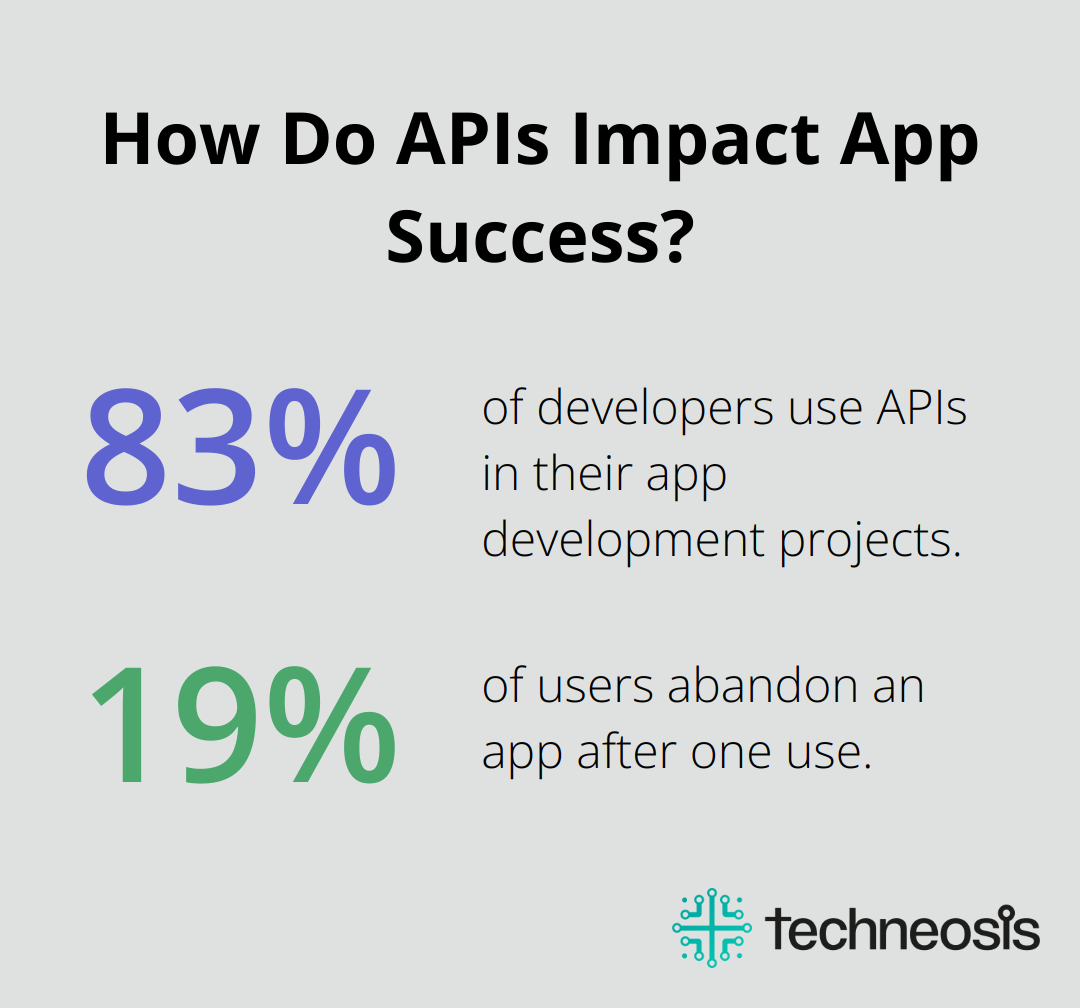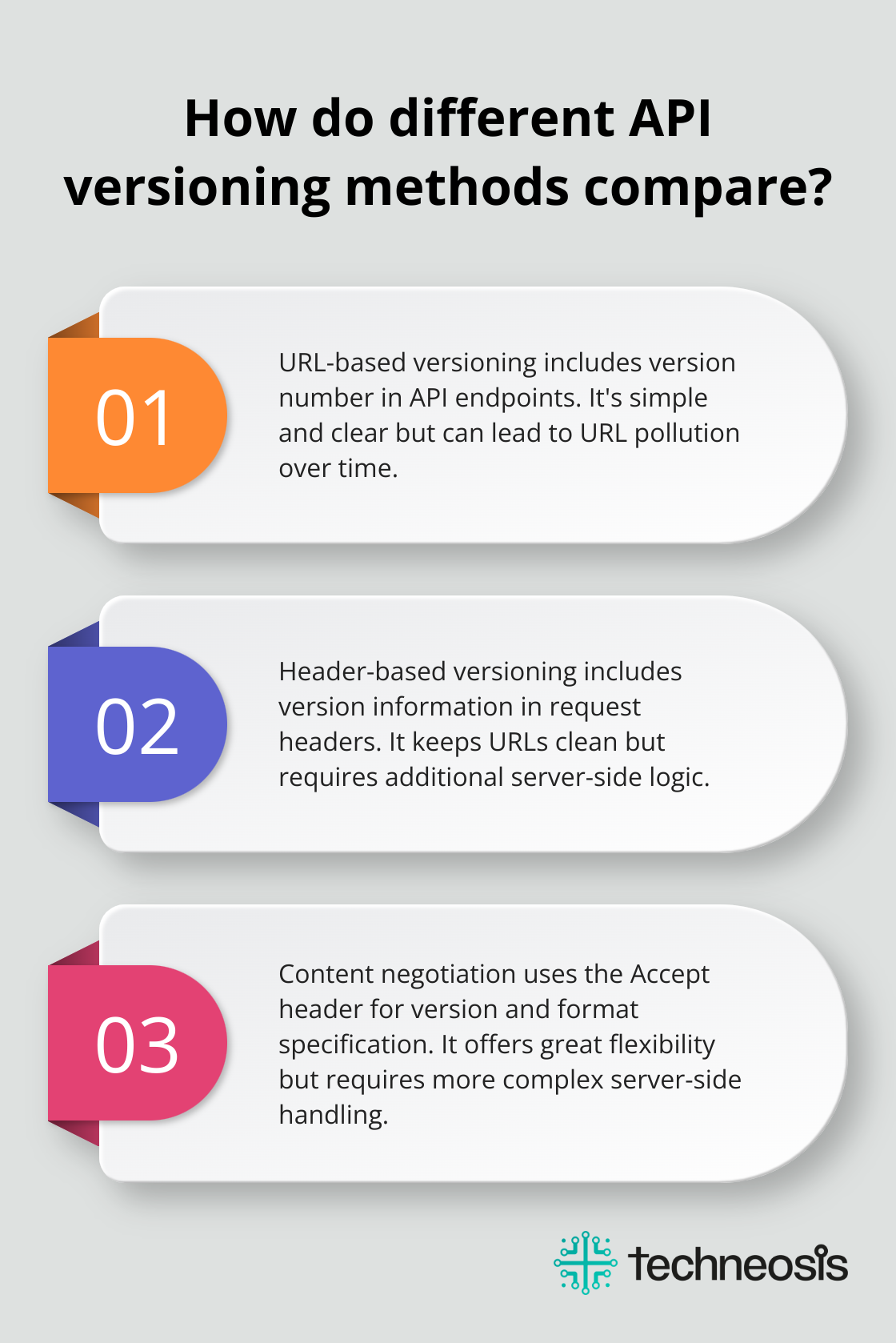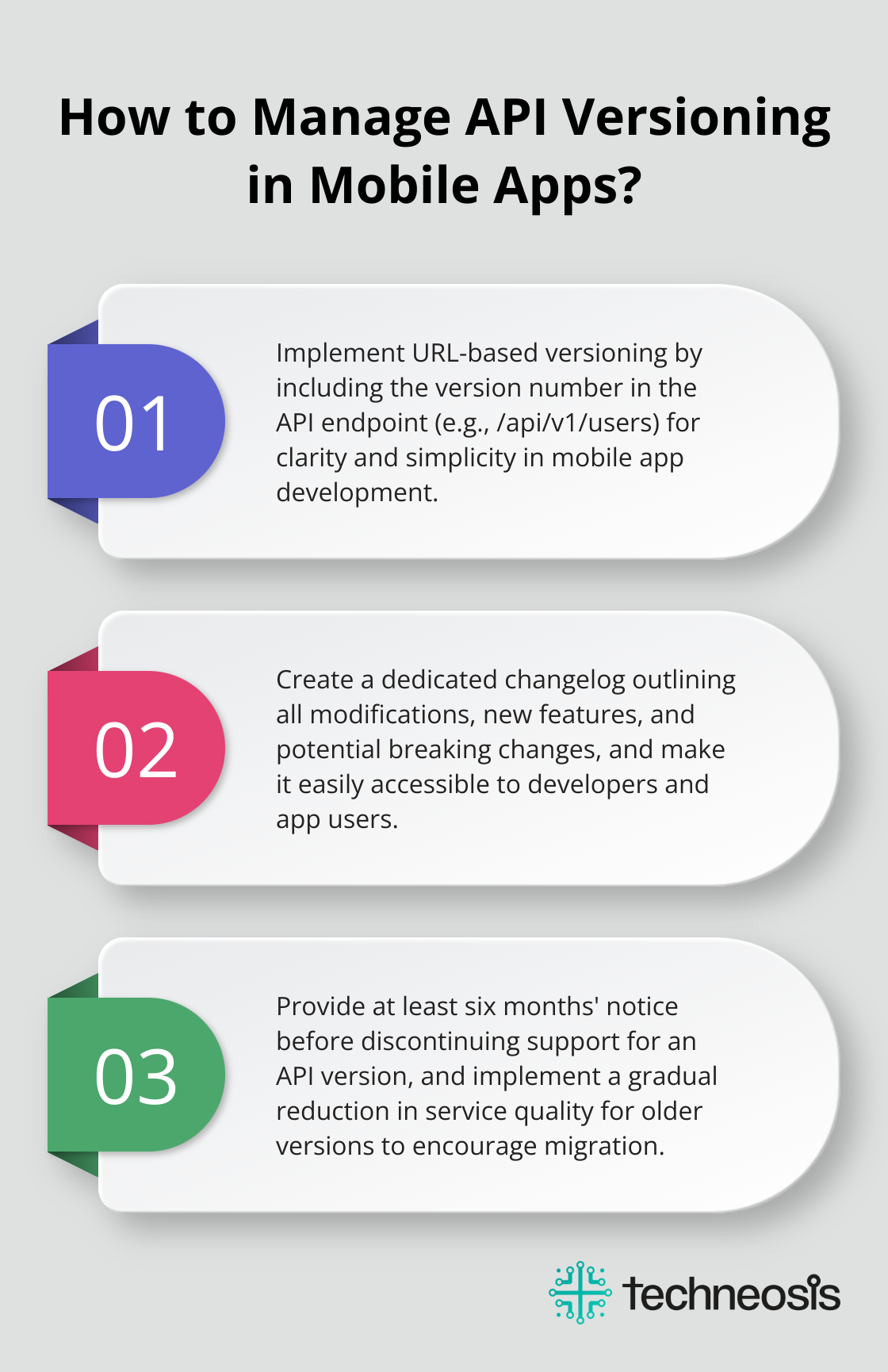As mobile apps evolve, their APIs must adapt to support new features and improvements. However, these changes can potentially disrupt existing integrations and user workflows.
Effective API versioning strategies are essential to manage these transitions seamlessly. In this post, we’ll explore best practices for mobile app API versioning to help developers navigate this complex landscape.
Understanding API Versioning in Mobile App Development
API versioning stands as a cornerstone practice in mobile app development. It enables developers to introduce changes and improvements to their APIs without disrupting existing integrations. At its essence, versioning creates distinct iterations of an API, each with its unique set of features and functionalities.
The Significance of API Versioning
API versioning transcends technical necessity; it represents a strategic approach to maintain app stability and user satisfaction. A survey by ProgrammableWeb reveals that 83% of developers use APIs in their app development projects. This high percentage highlights the pivotal role APIs play in the development ecosystem.
Popular Versioning Strategies
Several strategies exist for implementing API versioning, each with its own merits:
- URL-based versioning: This method includes the version number in the API endpoint (e.g., /api/v1/users). It’s widely adopted due to its simplicity and clarity.
- Header-based versioning: This approach includes version information in the request headers. It offers a cleaner URL structure but can prove less intuitive for developers.
Advantages for Mobile Applications
Proper API versioning brings numerous benefits to mobile app development:
- Seamless Updates: It allows for smooth updates without disrupting user experience. This factor proves critical, considering that 19% of users abandon an app after one use.
- Backward Compatibility: By maintaining backward compatibility through versioning, developers ensure that older app versions continue to function while new features roll out.
- A/B Testing: Versioning facilitates A/B testing of new API features. This approach allows developers to gather real-world data on performance and user engagement before fully committing to changes. (Instagram used this method to test and refine its algorithmic feed before rolling it out to all users.)
- Efficient Bug Fixing: API versioning supports more efficient bug fixing and security updates. When vulnerabilities surface, developers can quickly release patched versions without affecting the entire user base simultaneously. This targeted approach minimizes potential downtime and security risks.

In the competitive mobile app market, where user retention reigns supreme, API versioning plays a vital role in maintaining app stability and user satisfaction. Robust versioning strategies ensure apps remain responsive to user needs while continuing to evolve and improve over time.
As we move forward, we’ll explore the practical aspects of implementing these versioning strategies in mobile apps, ensuring you have the tools to create a seamless user experience across all versions of your application.
How to Implement API Versioning in Mobile Apps
API versioning in mobile apps ensures smooth updates and maintains backward compatibility. The right versioning strategy can significantly impact the long-term success of your mobile application.
URL-Based Versioning: Simple and Clear
URL-based versioning includes the version number directly in the API endpoint (e.g., /api/v1/users or /api/v2/products). This strategy is widely adopted due to its simplicity and clarity.

This method allows developers to quickly identify which version of the API they’re working with, reducing potential confusion and errors.
However, URL-based versioning can lead to URL pollution over time. As your API evolves and new versions are introduced, you may end up with a large number of different URLs to maintain.
Header-Based Versioning: Clean URLs, More Complexity
Header-based versioning includes version information in the request headers. This approach keeps URLs clean and consistent across versions. For instance, you might use a custom header like X-API-Version: 1.0.
While this method offers a cleaner URL structure, it can be less intuitive for developers who are used to seeing version information in the URL. It also requires additional server-side logic to parse and route requests based on header information.
Content Negotiation: Flexibility for Different Formats
Content negotiation leverages the Accept header to specify not just the version, but also the format of the response. This method allows clients to request specific representations of resources.
For example, a client might send a request with Accept: application/vnd.myapp.v2+json to specify both the version and the desired response format. This approach offers great flexibility but requires more complex server-side handling.
GitHub’s API exemplifies effective content negotiation. The parameters used in media types for content negotiation can contain custom input that can be used to drive API versioning.
Query Parameter Versioning: Simple but Less RESTful
Query parameter versioning adds the version as a parameter in the URL, such as /api/users?version=1. This method is simple to implement and easy for developers to understand.
However, it’s generally considered less RESTful than other approaches, as it mixes versioning concerns with resource identification. It can also lead to issues with caching, as different versions of the same resource might have the same URL.
When implementing API versioning, it’s important to consider your specific use case and development team preferences. URL-based versioning is often recommended for its simplicity and wide adoption, but the approach should be tailored based on each project’s unique needs.
Clear documentation of your versioning strategy is essential. Effective documentation of your versioning approach will help both your internal team and external developers integrate with your API effectively.
As we move forward, let’s explore how to manage API version transitions effectively, ensuring smooth updates and minimal disruption to your users.
How to Manage API Version Transitions Effectively
Clear Communication of Changes
Clear communication forms the backbone of successful API version transitions. Create a dedicated changelog that outlines all modifications, new features, and potential breaking changes. Make this changelog easily accessible to developers and app users.

Implement an in-app notification system to alert users about upcoming API changes. This proactive approach allows users to prepare for updates and minimizes potential disruptions.
Strategic Deprecation Planning
When sunsetting older API versions, a well-planned deprecation strategy is essential. Provide at least six months’ notice before discontinuing support for an API version. This timeframe gives API-dependent companies time to work on changing their business and technological strategy.
During the deprecation period, implement a gradual reduction in service quality for the older version. This can include slower response times or reduced rate limits. This approach encourages users to migrate to the newer version while still maintaining some functionality for those who haven’t yet transitioned.
Maintaining Backward Compatibility
Backward compatibility preserves user trust and prevents app failures. Implement a robust testing strategy that includes regression tests for all supported API versions. This ensures that new updates don’t inadvertently break functionality in older versions.
Use feature flags to gradually roll out new API features. This allows for easy rollback if issues arise and provides flexibility in managing the transition between versions.
Resolving Version Conflicts
Version conflicts can arise when different parts of an app or different integrations rely on different API versions. Implement a version resolution system that can handle requests from multiple API versions simultaneously.
Try using a proxy layer that can route requests to the appropriate API version based on the client’s needs. This allows for a smoother transition period where multiple versions can coexist without causing conflicts.
Effective version management requires constant attention and refinement. These strategies ensure that your API version transitions are smooth, user-friendly, and minimize disruptions to your mobile app’s functionality.
Final Thoughts
Mobile app API versioning ensures smooth application evolution while maintaining user satisfaction. Effective versioning strategies allow developers to introduce new features without disrupting existing functionality. Clear communication about API changes, robust deprecation strategies, and backward compatibility are essential for successful versioning.

We at Techneosis understand the complexities of mobile app API versioning and its impact on businesses. Our team can guide you through the process, aligning your versioning strategy with your business goals. We strive to help you make informed technology decisions that drive measurable results.
Adopting versioning best practices future-proofs your business in the evolving digital landscape. These strategies set the stage for sustainable growth and continued success in the competitive world of mobile applications. Embrace these practices to stay ahead in the mobile app market.



